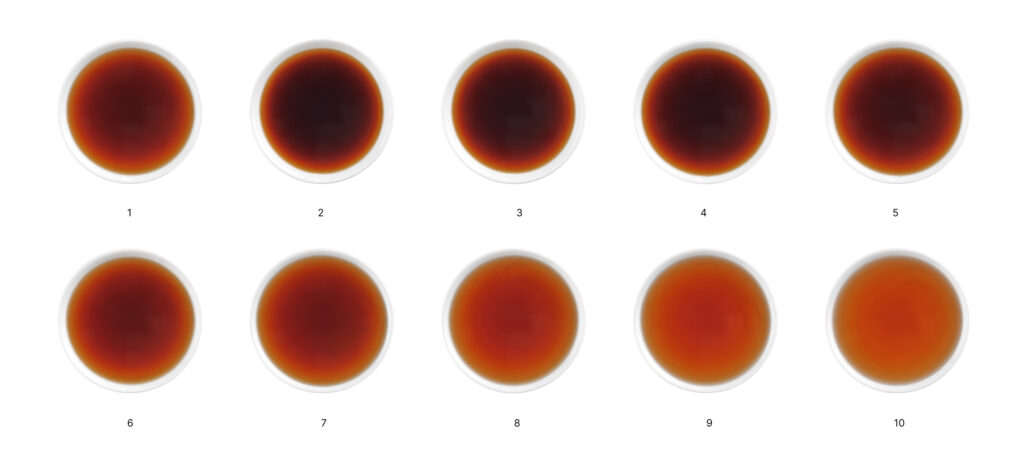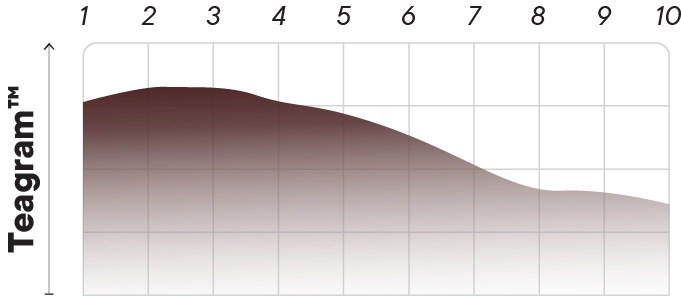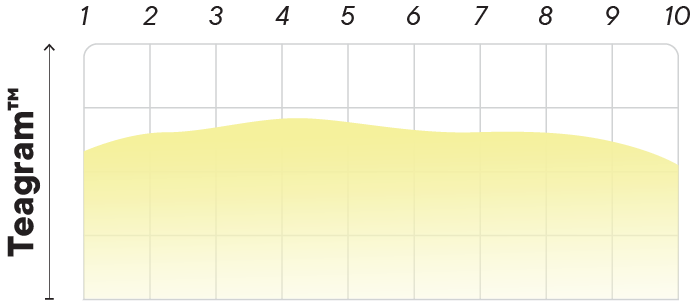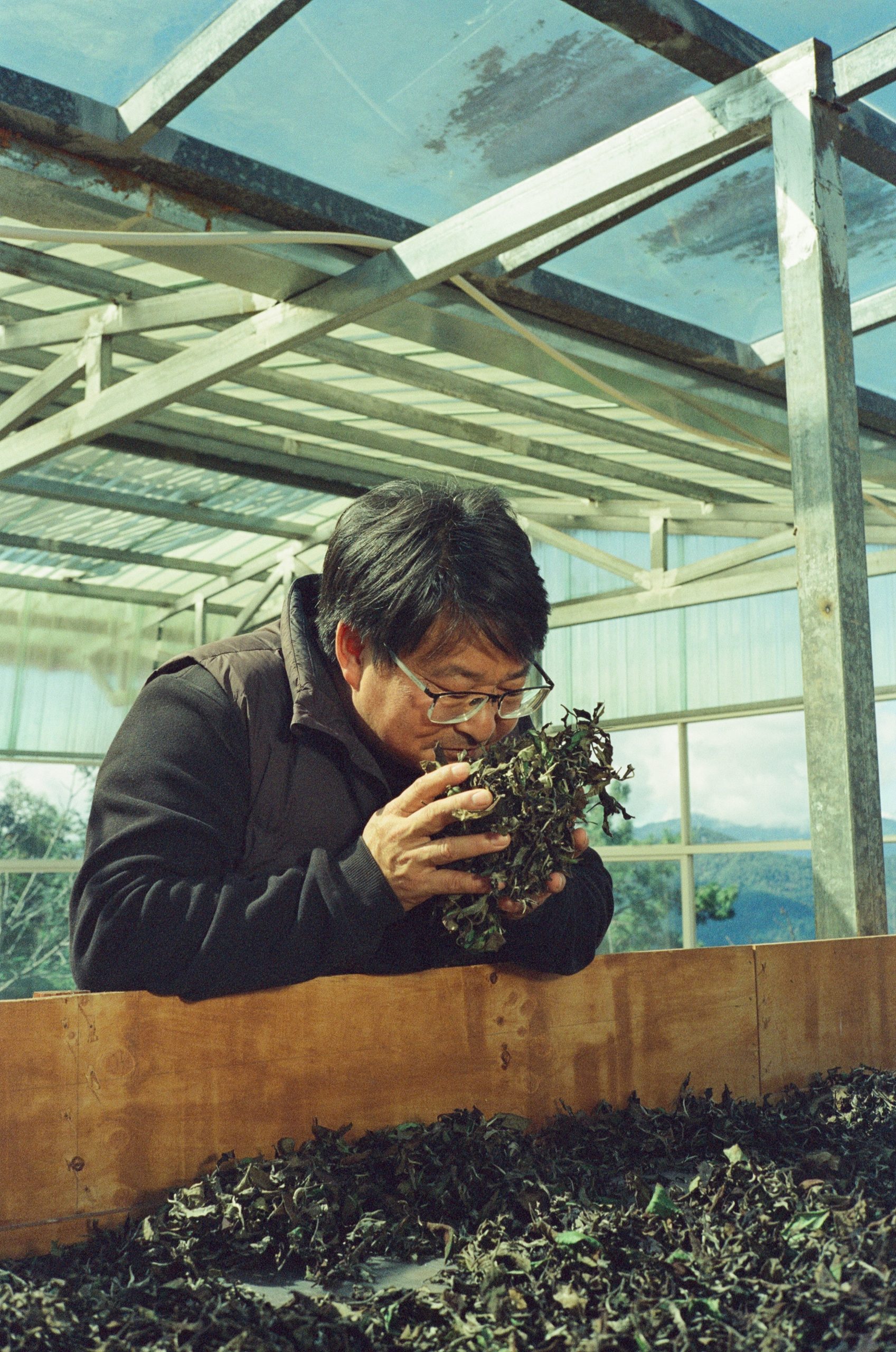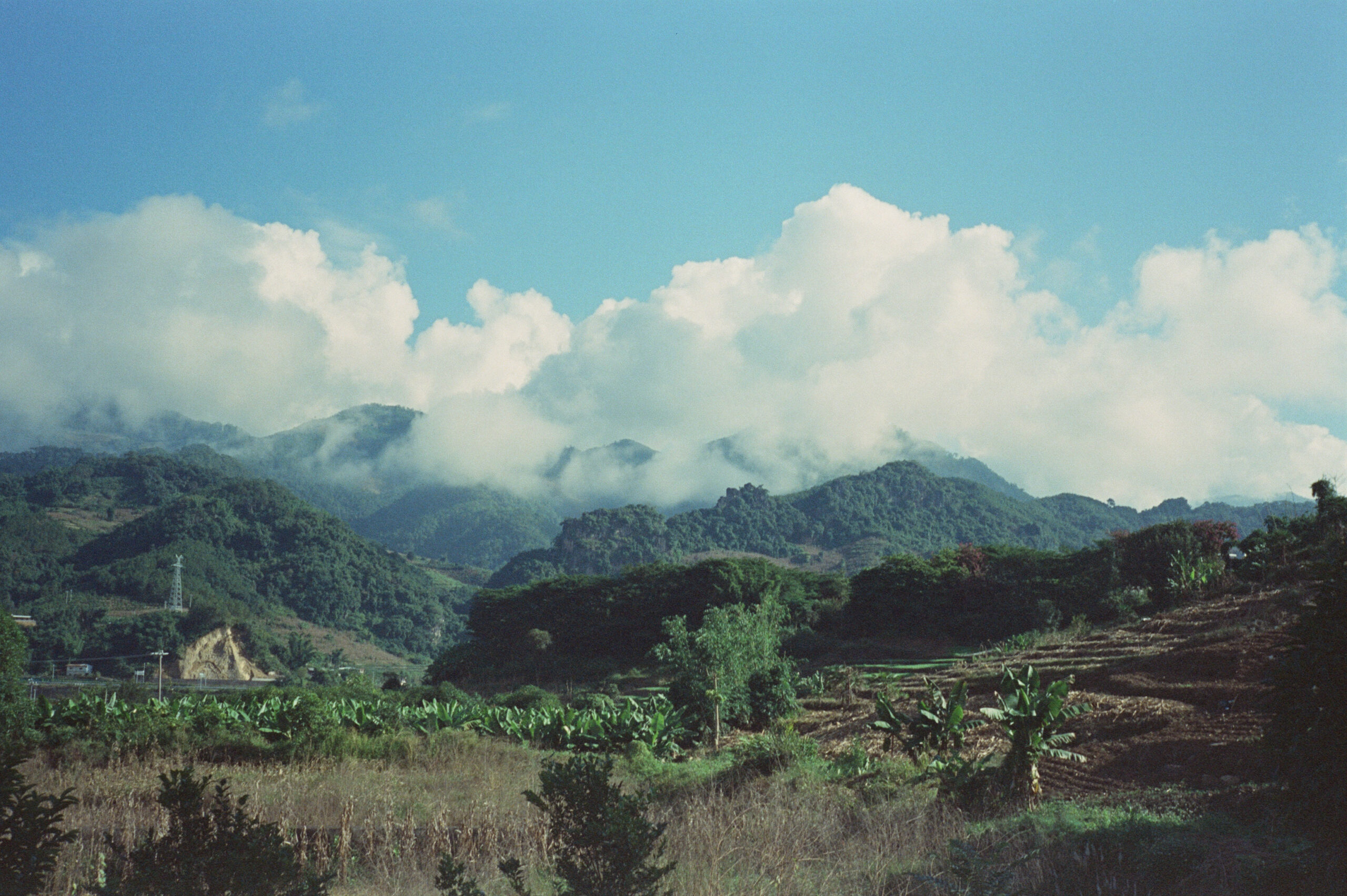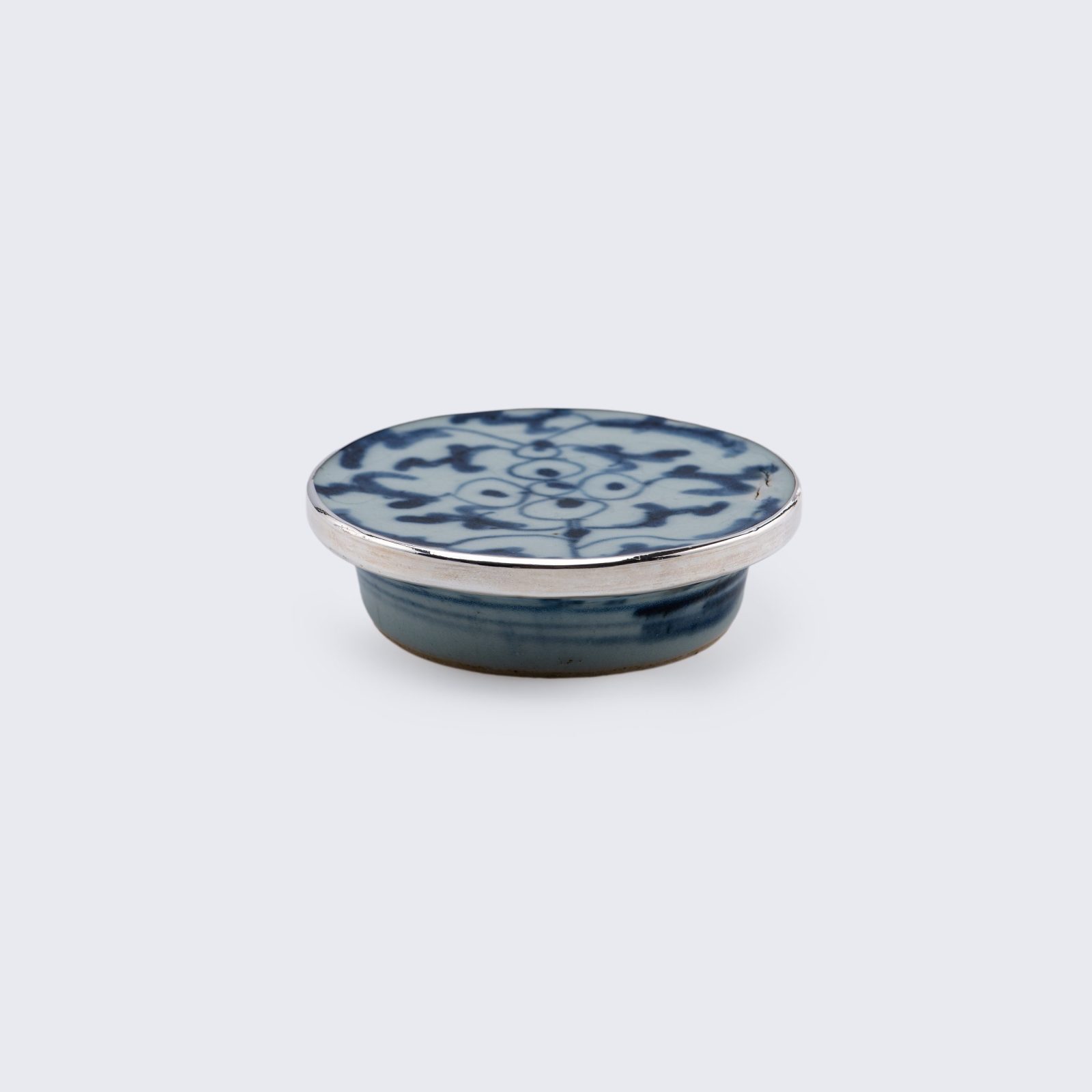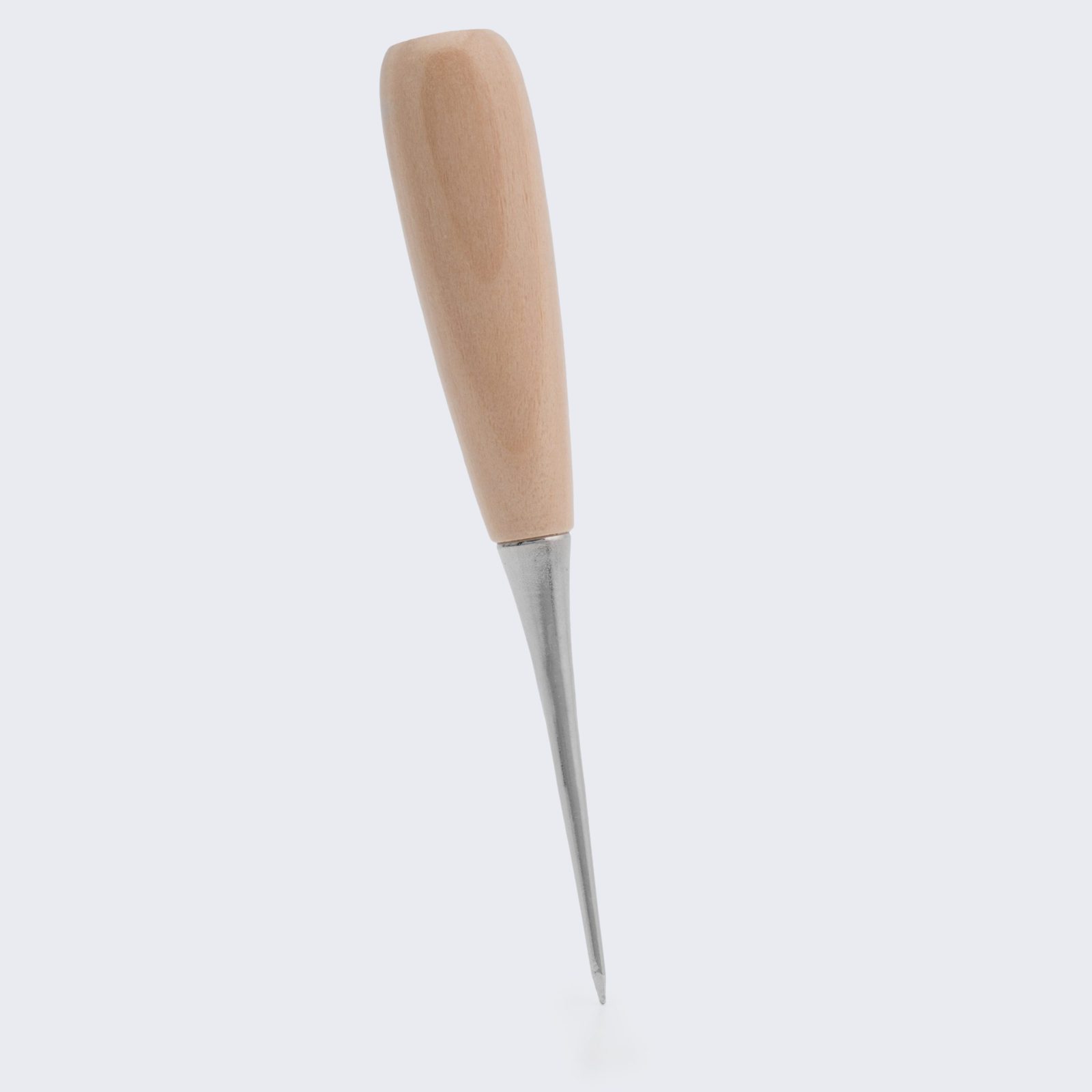TEAGRAM

TEAGRAM
TEAGRAM is a system for visualizing the level of tea extraction that changes with each infusion. This simple visualization in the form of a line graph gives us answers to questions typical of tea connoisseurs:
- “How long does this tea last?” or “How many infusions does it hold?” – these questions refer to the evaluation of the tea extraction rate.
- “What is the best infusion?” or “At what infusion does the decline begin?” – these questions relate to understanding the dynamics of the tea extraction level with each new infusion.

Tea Extraction Algorytm Rate
To obtain the data required for TEAGRAM visualization, we use a special measurement algorithm called TEAR (Tea Extraction Algorithmic Rate). It is based on three main principles:
- The refractometry method is a method of determining the amount of a substance in a liquid by an optical analysis method based on measuring the refractive index of light passing through the substance under study using a refractometer.
- A fixed measurement protocol is a set of specific rules and tools that are used in the process of each measurement. This creates the same conditions for each study, which makes it possible to obtain correct data that can be compared with each other.
- Data Adaptation Algorithm – The data obtained during refractometry is processed using a special mathematical algorithm that smoothes out peak values, making the data more understandable through graphical visualization. This also makes the resulting graphs more in line with our direct experience of the dynamics of tea extractivity during tea drinking.

The measurement protocol is as follows:
- 10 infusions. The first infusion has an exposure time of 30 seconds, and each subsequent infusion has an exposure time of 15 seconds. So the last infusion is brewed for 2 min. 45 sec.
- The brewing temperature is 98°C for all teas except green teas (fully fixed teas). For green teas, the brewing temperature is 90°C.
- We use water with a salinity of 0.40 ppm and a PH level of 8-8.5.
- For brewing, a standard teapot of the 1st Yixing Factory of the 60s, made of Hong Ni clay, with a capacity of 90 ml (F1 60’s Hong Ni Shui Ping 90ml) is used.
- The proportion of brewing is 1 to 20. That is, we take 4.5 grams of tea for a 90 ml teapot.
- We use a VST LAB Coffee III digital refractometer for the measurement. The temperature of the liquid during the measurement is 20°C.
Data adaptation algorithm:
x – infusion number (from 1 to 10)
Y(x) – value from the refractometer
Gr(x) – value on the graph
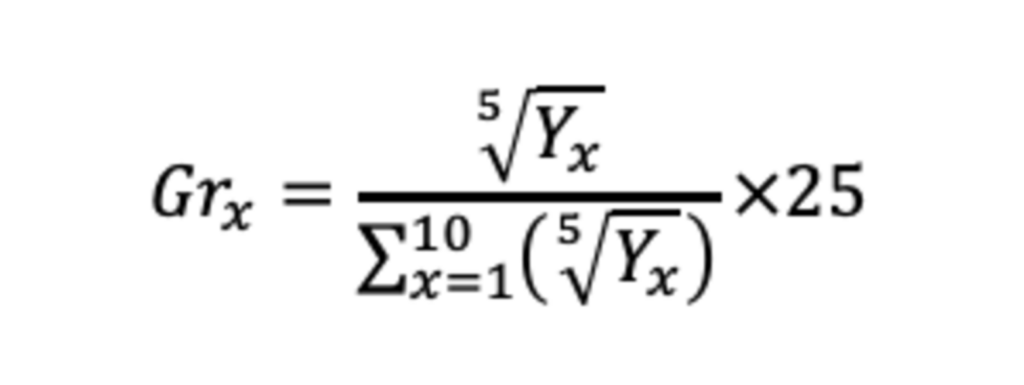
It should be understood that TEAGRAM does not give us an answer to the question “is this or that tea good or bad”. It helps us better understand the character of tea and makes it easier to choose. The extractivity of tea in general and its dynamics depend on many factors and are a unique feature of each particular tea. The main ones, in our opinion, are:
- type of tea raw materials: age of plants, leaf development stage (bud, leaf, flash, mix) and leaf size.
- production technology: the main factors are the degree of fermentation, mechanical and thermal treatment.
- the stage of maturation (post-fermentation) of the finished tea.
Of course, each category of tea has its own typical features, and extractivity and its dynamics are among them. They are formed by common technological features and can be clearly seen in the TEAGRAM charts.
For example, Shu Puerhs have high extractivity and quickly give up their potential. Their peaks usually occur on the 2nd or 3rd infusion, after which a distinct decline begins. This is mainly due to strong secondary fermentation, which actually leads to a certain degradation of the cell walls. Because of this, the contents of these cells are quickly extracted into the liquid. On the opposite side are white teas, which are drunk for a very long time. The peaks of extraction are extended and occur at 4-7th infusion. The main reason for this is the lack of mechanical processing of the leaves. Therefore, the cells remain intact, which makes the extraction less intense.
When we are in a hurry and have limited time for tea drinking, we can choose “fast” Shu Puerh. And when we want to sit quietly and “slow down”, slowly enjoying each new infusion, then our choice can confidently stop at white tea.
There is a similar trend between bud and leaf tea. After all, the buds are thicker and denser than the leaves and are much slower to extract. Leaves, on the other hand, give the tea more “body”. That is why most Yunnan teas combine both buds and leaves , which makes the tea more harmonious and balanced. But this is our own subjective vision….
